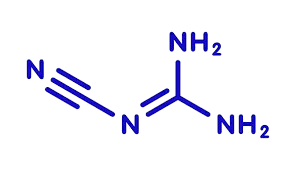In today’s rapidly evolving industrial landscape, understanding the production costs of essential chemicals is vital for businesses to remain competitive. Bio-adipic acid is one such chemical that has gained prominence across various sectors, from automotive to textiles and beyond, thanks to its environmentally friendly attributes. With its sustainable production methods and versatile applications, bio-adipic acid production cost analysis is crucial for companies seeking to optimize expenses and adopt eco-friendly alternatives. This article provides an in-depth look at the factors driving bio-adipic acid production cost, the manufacturing process, and how detailed cost reports can help businesses make informed decisions.
The Importance of Bio-Adipic Acid in Modern Industries
Adipic acid is a widely used chemical, traditionally derived from petroleum-based sources and heavily utilized in producing nylon, plastics, polyurethanes, and more. Bio-adipic acid, produced through renewable sources, offers a sustainable alternative that reduces environmental impact by lowering greenhouse gas emissions. As more industries seek to meet sustainability goals, bio-adipic acid is becoming an increasingly valuable component in green manufacturing. This shift highlights the importance of understanding the factors that influence bio-adipic acid production costs to make sustainable choices that remain economically viable.
Request a Free Sample For Bio-adipic Acid Production Cost Reports – https://www.procurementresource.com/production-cost-report-store/bio-adipic-acid/request-sample
Key Factors Influencing Bio-Adipic Acid Production Costs
The production of bio-adipic acid involves several factors that affect the overall cost, each contributing to the expenses required for an efficient and profitable operation.
- Raw Material Costs
Bio-adipic acid is produced from renewable sources, such as glucose derived from biomass (e.g., corn or sugarcane). The cost of these raw materials can vary based on availability, location, and market demand. For instance, fluctuations in the prices of agricultural commodities, especially when weather conditions impact crop yields, can significantly affect raw material costs. - Fermentation and Bioprocessing Costs
The production of bio-adipic acid commonly involves fermentation processes, where microorganisms convert renewable resources into adipic acid. The expenses related to maintaining optimal fermentation conditions, such as temperature, pH levels, and nutrients, impact production costs. Additionally, costs associated with the development and maintenance of biocatalysts, which enhance the efficiency of fermentation, are integral to bioprocessing expenses. - Energy Consumption
Energy requirements for bio-adipic acid production are generally lower than those for petroleum-based adipic acid due to the reduced need for high-temperature processing. However, energy still plays a role in powering fermentation tanks, distillation units, and other equipment necessary for downstream processing. Energy prices, which vary based on geographic location and energy sources, are thus an important factor in production costs. - Labor and Operational Expenses
Skilled labor is essential to monitor and control bio-adipic acid production processes. Operational expenses also include costs related to the upkeep of fermentation systems and safety measures. Countries with higher labor costs may experience increased production expenses, though some of these costs can be mitigated with process automation. - Technological Advances and Equipment Costs
As the industry develops, innovative technologies continue to emerge for bio-adipic acid production. These technologies improve production efficiency and yield but often require upfront investments. Equipment such as advanced fermentation tanks, continuous flow reactors, and filtration systems come with initial installation and maintenance costs. Companies often weigh these costs against the long-term benefits of improved production rates and energy savings. - Environmental and Regulatory Compliance
Bio-adipic acid production is generally more eco-friendly than traditional adipic acid production, yet companies must still comply with environmental regulations. These regulations can include managing waste, reducing emissions, and adhering to standards for safe and sustainable production. Investments in pollution control, waste treatment, and certification processes contribute to the overall production cost, though they may offer tax incentives or credits in some regions.
Bio-Adipic Acid Production Process: A Breakdown
Bio-adipic acid production involves a multi-step process beginning with biomass conversion and progressing through fermentation and downstream processing. Understanding the steps involved can shed light on the cost components at each stage.
- Biomass Feedstock Preparation
The initial stage involves preparing the biomass feedstock, which often comes from renewable sources like corn or sugarcane. The feedstock is processed to extract glucose, a crucial ingredient in the fermentation process. Costs in this phase include raw material procurement, milling, and enzymatic hydrolysis to break down the feedstock into fermentable sugars. - Fermentation
In the fermentation phase, microorganisms such as genetically engineered bacteria or yeast convert glucose into adipic acid. This stage requires careful control of fermentation conditions, including temperature, oxygen levels, and pH balance. Maintaining an optimal environment for microbial growth and maximizing yield are critical to cost efficiency. Expenses associated with biocatalyst development, nutrient additions, and energy usage contribute to costs in this phase. - Separation and Purification
After fermentation, the bio-adipic acid must be separated from other by-products and purified. This step often involves distillation, filtration, and crystallization processes, which require additional energy and equipment. The choice of purification method depends on factors like the purity level required and the intended application of the bio-adipic acid. Costs in this stage are driven by the expenses related to energy, labor, and maintenance of purification systems. - Drying and Packaging
Once purified, the bio-adipic acid is dried and packaged for storage or distribution. The drying process removes any remaining moisture, while packaging protects the product from contamination. Costs here include energy for drying equipment, packaging materials, and storage expenses if the product requires specialized handling.
How Procurement Resource’s Bio-Adipic Acid Production Cost Reports Can Benefit You
Our production cost reports offer detailed insights into each phase of bio-adipic acid production, helping companies understand the cost structure and identify opportunities for cost reduction. Our reports include data on:
- Cost Component Analysis
Break down the costs associated with raw materials, energy, labor, and technology, offering a comprehensive view of each production phase. - Market Trends and Forecasts
Stay updated on bio-adipic acid market trends, including demand forecasts and potential changes in feedstock prices, to make proactive decisions. - Process Optimization Opportunities
Discover ways to improve operational efficiency by exploring alternative energy sources, enhancing bioprocessing efficiency, and adopting the latest technologies. - Regulatory Insights
Understand the impact of environmental and regulatory compliance on production costs, helping companies make sustainable choices while meeting industry standards.
Advantages of Bio-Adipic Acid for Sustainable Manufacturing
With increasing environmental awareness, companies are shifting towards bio-based chemicals, and bio-adipic acid offers a promising alternative to traditional petroleum-based adipic acid. Here are some reasons why bio-adipic acid is an attractive option for sustainable manufacturing:
- Reduced Carbon Emissions
Traditional adipic acid production releases substantial greenhouse gases, while bio-adipic acid production generates significantly lower emissions. By reducing dependency on fossil fuels, bio-adipic acid helps companies meet their sustainability goals and lower their carbon footprint. - Renewable Resource Utilization
Bio-adipic acid is derived from renewable biomass sources, reducing reliance on non-renewable resources. This not only makes production more sustainable but also creates opportunities for using agricultural waste as a feedstock. - Versatility and Market Potential
Bio-adipic acid can replace conventional adipic acid in various applications, from nylon production to food additives, creating a vast market potential for industries seeking eco-friendly alternatives. - Alignment with Circular Economy Goals
By converting biomass into useful products, bio-adipic acid production aligns with circular economy principles. This approach promotes recycling, waste reduction, and sustainable resource management.
Stay Competitive with Procurement Resource’s Bio-Adipic Acid Cost Reports
Procurement Resource’s reports provide the insights companies need to navigate the complexities of bio-adipic acid production costs. By examining every aspect of the production process, businesses can better understand cost drivers and make data-driven decisions. Our cost reports enable companies to stay competitive by:
- Enhancing Cost Efficiency
Identify cost-saving opportunities and optimize resources to maintain profitability in a growing market. - Preparing for Market Shifts
Anticipate changes in raw material availability, energy prices, and regulatory requirements to adapt strategies as needed. - Strengthening Sustainable Practices
Implement eco-friendly practices and minimize waste through data-backed insights, meeting both regulatory standards and consumer expectations.
Request Your Free Sample Report Today and take the first step toward informed, cost-effective bio-adipic acid production.
Contact Us:
Company Name: Procurement Resource
Contact Person: Leo Frank
Email: sales@procurementresource.com
Toll-Free Numbers:
- USA & Canada: +1 307 363 1045
- UK: +44 7537171117
- Asia-Pacific (APAC): +91 1203185500
Address: 30 North Gould Street, Sheridan, WY 82801, USA


